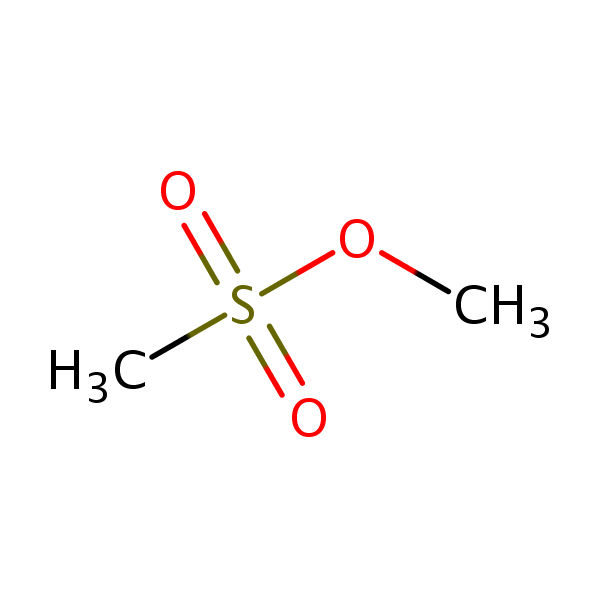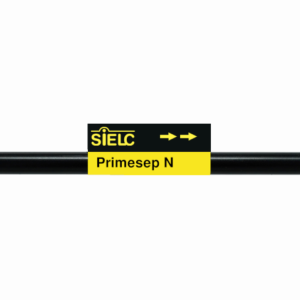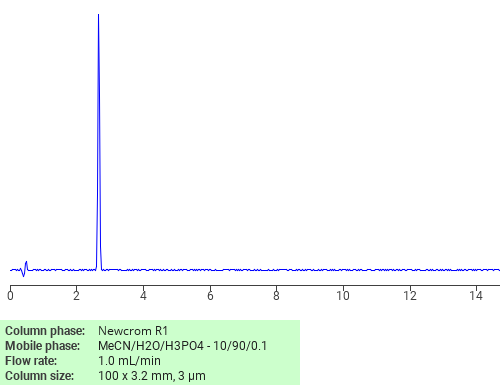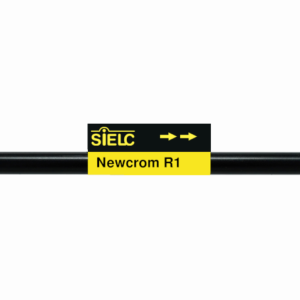| CAS Number | 66-27-3 |
|---|---|
| Molecular Formula | C2H6O3S |
| Molecular Weight | 110.130 |
| InChI Key | MBABOKRGFJTBAE-UHFFFAOYSA-N |
| LogP | -0.504 |
| Synonyms |
|
Applications:
RI HPLC Method for Analysis of Methyl methanesulfonate (MMS) on Primesep N Column
February 3, 2025
HPLC Method for Methyl methanesulfonate on Primesep N by SIELC Technologies
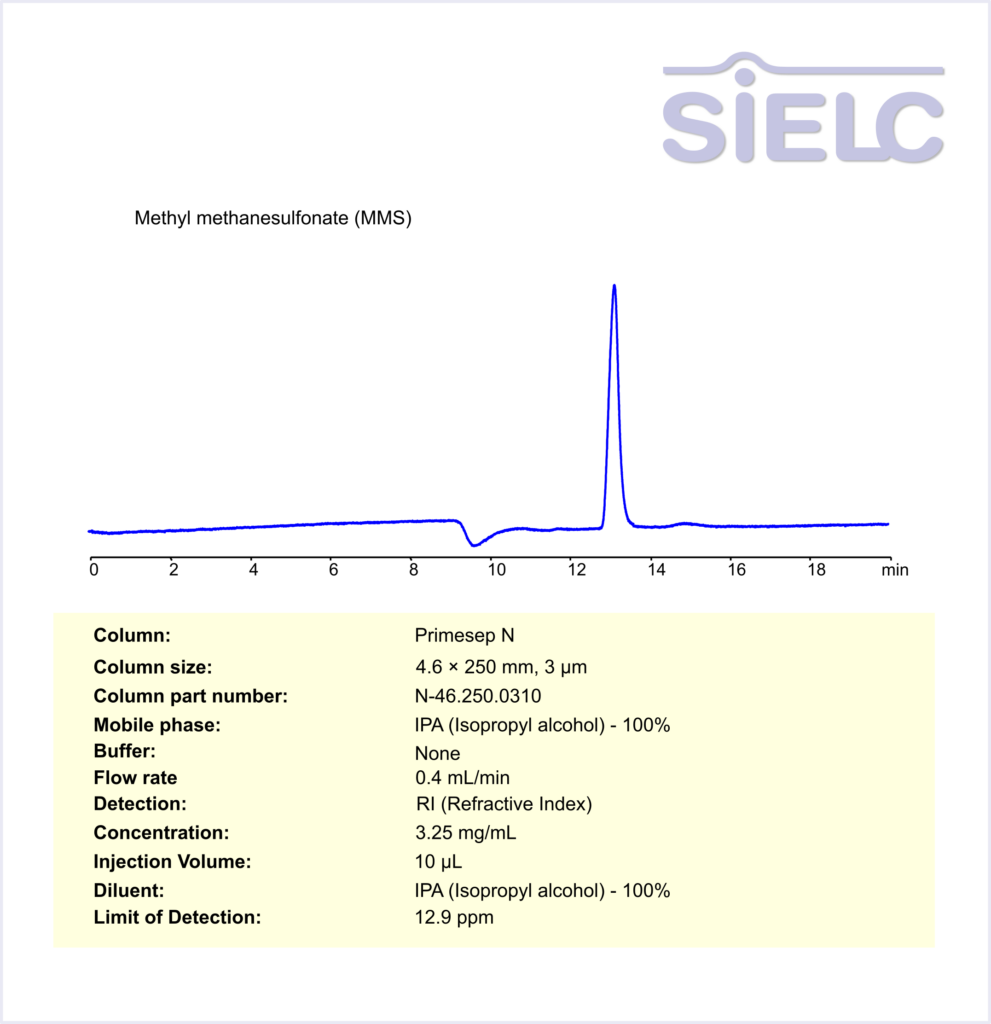
High Performance Liquid Chromatography (HPLC) Method for Analysis of Methyl methanesulfonate
Methyl methanesulfonate (MMS) is an organic compound with the molecular formula C₂H₆O₄S. It is a potent alkylating agent known for its ability to transfer methyl groups to DNA, proteins, and other cellular components. Due to its strong mutagenic and cytotoxic properties, MMS is widely used in scientific research to study DNA damage, repair mechanisms, and genotoxicity.
Methyl methanesulfonate can be retained and analyzed using the Primesep N stationary phase column. The analysis utilizes an isocratic method with a simple mobile phase consisting solely of isopropyl alcohol (IPA). Detection is performed using a Refractive Index (RI) detector.
| Column | Primesep N, 4.6 x 250 mm, 3 µm, 100 A, dual ended |
| Mobile Phase | IPA – 100% |
| Buffer | None |
| Flow Rate | 0.4 ml/min |
| Detection | RI |
| LOD | 12.9 ppm |
*LOD was determined for this combination of instrument, method, and analyte, and it can vary from one laboratory to another even when the same general type of analysis is being performed.
| Class of Compounds | Alkylating Agents |
| Analyzing Compounds | Methyl methanesulfonate |
Application Column
Primesep N
Column Diameter: 4.6 mm
Column Length: 250 mm
Particle Size: 3 µm
Pore Size: 100 A
Column options: dual ended

Separation of Methyl methanesulfonate on Newcrom R1 HPLC column
February 19, 2018
Methyl methanesulfonate can be analyzed by this reverse phase (RP) HPLC method with simple conditions. The mobile phase contains an acetonitrile (MeCN), water, and phosphoric acid. For Mass-Spec (MS) compatible applications the phosphoric acid needs to be replaced with formic acid. Smaller 3 µm particles columns available for fast UPLC applications. This liquid chromatography method is scalable and can be used for isolation impurities in preparative separation. It also suitable for pharmacokinetics.
Application Column
Newcrom R1
The Newcrom columns are a family of reverse-phase-based columns. Newcrom A, AH, B, and BH are all mixed-mode columns with either positive or negative ion-pairing groups attached to either short (25 Å) or long (100 Å) ligand chains. Newcrom R1 is a special reverse-phase column with low silanol activity.
Select options